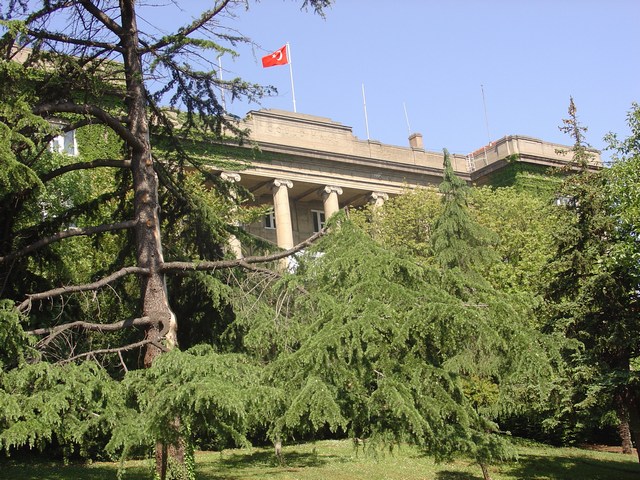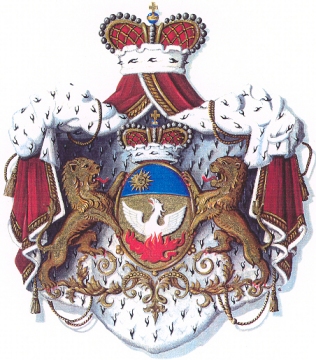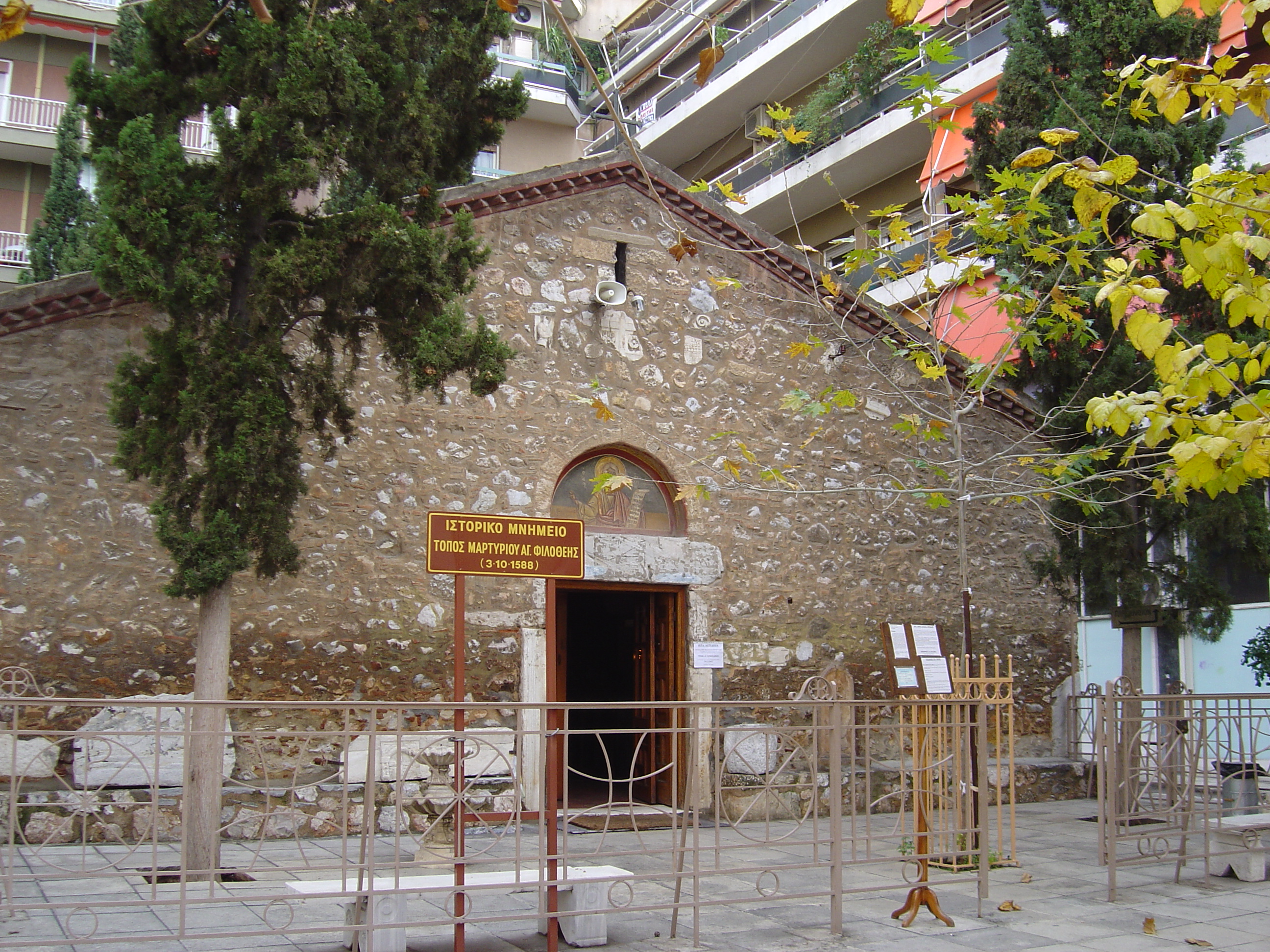|
Ekaterini Trikoupi
Aikaterini Trikoupi ( el, Αικατερίνη Τρικούπη, Constantinople, 1800 – Aegina, 15 July 1871) was the wife of the Prime Minister of Greece and historian Spyridon Trikoupis. Her son was Charilaos Trikoupis, also a prime minister. Biography She was born in Constantinople in 1800, the daughter of the scholar and officer in the Danubian Principalities, Nicholas Al. Mavrokordatos (1744–1818)Koula Xiradaki, Φαναριώτισσες, εκδόσεις Φιλιππότη, Athens, 1999, p. 133. and Smaragda Karatza. She had a brother, the fighter of the Greek Revolution of 1821 and later politician of the independent Greek state, Alexandros Mavrokordatos, and two sisters, Eleni and Efrosini (wife of Friedrich Eduard von Rheineck). Her uncle was the ruler (hospodar) of Wallachia, John Caradja. When the Greek Revolution began and the Ottomans started persecutions against the Greeks of Constantinople, her house at Arnavutköy was attacked while her uncle, Georgios Mavr ... [...More Info...] [...Related Items...] OR: [Wikipedia] [Google] [Baidu] |
Istanbul
Istanbul ( , ; tr, İstanbul ), formerly known as Constantinople ( grc-gre, Κωνσταντινούπολις; la, Constantinopolis), is the List of largest cities and towns in Turkey, largest city in Turkey, serving as the country's economic, cultural and historic hub. The city straddles the Bosporus strait, lying in both Europe and Asia, and has a population of over 15 million residents, comprising 19% of the population of Turkey. Istanbul is the list of European cities by population within city limits, most populous European city, and the world's List of largest cities, 15th-largest city. The city was founded as Byzantium ( grc-gre, Βυζάντιον, ) in the 7th century BCE by Ancient Greece, Greek settlers from Megara. In 330 CE, the Roman emperor Constantine the Great made it his imperial capital, renaming it first as New Rome ( grc-gre, Νέα Ῥώμη, ; la, Nova Roma) and then as Constantinople () after himself. The city grew in size and influence, eventually becom ... [...More Info...] [...Related Items...] OR: [Wikipedia] [Google] [Baidu] |
Arnavutköy
Arnavutköy ( Albanian village; el, Μέγα Ρεύμα, Mega Revma) is a neighbourhood in Istanbul, Turkey renowned for its wooden Ottoman mansions and seafood restaurants, as well as for the campus of the prestigious Robert College with its historic buildings. It is part of the Beşiktaş district of Istanbul, and is located between Ortaköy and Bebek on the European shoreline of the Bosphorus strait. The existence of a mosque, church and synagogue in close proximity to one another serves as a reminder of Arnavutköy's old, now lost, cosmopolitanism. The coast road is usually lined with anglers and small fishing boats frequently pass Arnavutköy; the fresh fish caught is sometimes sold to the local seafood restaurants. At the eastern end of Arnavutköy the coast juts out to form Akıntıburnu (the Cape of the Current) where the waters of the Bosphorus once flowed so powerfully that small boats had to be towed round it. Infrequent Şehir Hatları (City Lines) ferries ca ... [...More Info...] [...Related Items...] OR: [Wikipedia] [Google] [Baidu] |
19th-century Greek Women
The 19th (nineteenth) century began on 1 January 1801 ( MDCCCI), and ended on 31 December 1900 ( MCM). The 19th century was the ninth century of the 2nd millennium. The 19th century was characterized by vast social upheaval. Slavery was abolished in much of Europe and the Americas. The First Industrial Revolution, though it began in the late 18th century, expanding beyond its British homeland for the first time during this century, particularly remaking the economies and societies of the Low Countries, the Rhineland, Northern Italy, and the Northeastern United States. A few decades later, the Second Industrial Revolution led to ever more massive urbanization and much higher levels of productivity, profit, and prosperity, a pattern that continued into the 20th century. The Islamic gunpowder empires fell into decline and European imperialism brought much of South Asia, Southeast Asia, and almost all of Africa under colonial rule. It was also marked by the collapse of the lar ... [...More Info...] [...Related Items...] OR: [Wikipedia] [Google] [Baidu] |
Mavrocordatos Family
The House of Mavrocordatos (also Mavrocordato, Mavrokordatos, Mavrocordat, Mavrogordato or Maurogordato; el, Μαυροκορδάτος) is the name of a family of Phanariot Greeks originally from Chios, a branch of which was distinguished in the history of the Ottoman Empire, Wallachia, Moldavia, and modern Greece. History The family – whose members were given a status equal to a Prince of the Holy Roman Empire and later became hospodars – was founded by the late-Byzantine noble (and merchant) Nicholas Mavrocordatos (1522–1570) from the island of Chios. In 1875 the Mavrocordatoi were also recognized as Princes of the Russian Empire by the Emperor Alexander II of Russia. Notable members * Alexandra Mavrokordatou (1605–1684), spouse of the founder, intellectual and salonnière, mother of Alexander Mavrocordatos (1636–1709) :* Alexander Mavrocordatos (1636–1709), son of the founder and of Alexandra Mavrokordatou, styled prince ("Serene Highness") in 1699 by ... [...More Info...] [...Related Items...] OR: [Wikipedia] [Google] [Baidu] |
19th-century Greek People
The 19th (nineteenth) century began on 1 January 1801 ( MDCCCI), and ended on 31 December 1900 ( MCM). The 19th century was the ninth century of the 2nd millennium. The 19th century was characterized by vast social upheaval. Slavery was abolished in much of Europe and the Americas. The First Industrial Revolution, though it began in the late 18th century, expanding beyond its British homeland for the first time during this century, particularly remaking the economies and societies of the Low Countries, the Rhineland, Northern Italy, and the Northeastern United States. A few decades later, the Second Industrial Revolution led to ever more massive urbanization and much higher levels of productivity, profit, and prosperity, a pattern that continued into the 20th century. The Islamic gunpowder empires fell into decline and European imperialism brought much of South Asia, Southeast Asia, and almost all of Africa under colonial rule. It was also marked by the collapse of the la ... [...More Info...] [...Related Items...] OR: [Wikipedia] [Google] [Baidu] |
1871 Deaths
Events January–March * January 3 – Franco-Prussian War – Battle of Bapaume: Prussians win a strategic victory. * January 18 – Proclamation of the German Empire: The member states of the North German Confederation and the south German states, aside from Austria, unite into a single nation state, known as the German Empire. The King of Prussia is declared the first German Emperor as Wilhelm I of Germany, in the Hall of Mirrors at the Palace of Versailles. Constitution of the German Confederation comes into effect. It abolishes all restrictions on Jewish marriage, choice of occupation, place of residence, and property ownership, but exclusion from government employment and discrimination in social relations remain in effect. * January 21 – Giuseppe Garibaldi's group of French and Italian volunteer troops, in support of the French Third Republic, win a battle against the Prussians in the Battle of Dijon. * February 8 – 1871 French legislative election ... [...More Info...] [...Related Items...] OR: [Wikipedia] [Google] [Baidu] |
1800 Births
Eighteen or 18 may refer to: * 18 (number), the natural number following 17 and preceding 19 * one of the years 18 BC, AD 18, 1918, 2018 Film, television and entertainment * ''18'' (film), a 1993 Taiwanese experimental film based on the short story ''God's Dice'' * ''Eighteen'' (film), a 2005 Canadian dramatic feature film * 18 (British Board of Film Classification), a film rating in the United Kingdom, also used in Ireland by the Irish Film Classification Office * 18 (''Dragon Ball''), a character in the ''Dragon Ball'' franchise * "Eighteen", a 2006 episode of the animated television series '' 12 oz. Mouse'' Music Albums * ''18'' (Moby album), 2002 * ''18'' (Nana Kitade album), 2005 * '' 18...'', 2009 debut album by G.E.M. Songs * "18" (5 Seconds of Summer song), from their 2014 eponymous debut album * "18" (One Direction song), from their 2014 studio album ''Four'' * "18", by Anarbor from their 2013 studio album ''Burnout'' * "I'm Eighteen", by Alice Cooper commonly ... [...More Info...] [...Related Items...] OR: [Wikipedia] [Google] [Baidu] |
National Historical Museum, Athens
The National Historical Museum ( el, Εθνικό Ιστορικό Μουσείο, ''Ethnikó Istorikó Mouseío'') is a historical museum in Athens. Founded in 1882, is the oldest of its kind in Greece. It is located in the Old Parliament House at Stadiou Street in Athens, which housed the Hellenic Parliament from 1875 until 1932. A branch of the National History Museum has been organized and operated there since 2001. Collections The museum houses the collection of the (IEEE), founded in 1882. It is the oldest collection of its kind in Greece, and prior to its transfer to the Old Parliament, it was housed in the main building of the National Technical University. The collection contains historical items concerning the period from the capture of Constantinopolis by the Ottomans The Ottoman Turks ( tr, Osmanlı Türkleri), were the Turkic founding and sociopolitically the most dominant ethnic group of the Ottoman Empire ( 1299/1302–1922). Reliable information abou ... [...More Info...] [...Related Items...] OR: [Wikipedia] [Google] [Baidu] |
First Cemetery Of Athens
The First Cemetery of Athens ( el, Πρώτο Νεκροταφείο Αθηνών, ''Próto Nekrotafeío Athinón'') is the official cemetery of the City of Athens and the first to be built. It opened in 1837 and soon became a prestigious cemetery for Greeks and foreigners. The cemetery is located behind the Temple of Olympian Zeus and the Panathinaiko Stadium in central Athens. It can be found at the top end of Anapafseos Street (Eternal Rest Street). It is a large green space with pines and cypresses. In the cemetery there are three churches. The main one is the Church of Saint Theodores and there is also a smaller one dedicated to Saint Lazarus. The third church of Saint Charles is a Catholic church. The cemetery includes several impressive tombs such as those of Heinrich Schliemann, designed by Ernst Ziller; Ioannis Pesmazoglou; Georgios Averoff; and one tomb with a famous sculpture of a dead young girl called ''I Koimomeni'' ("The Sleeping Girl") and sculpted by Yan ... [...More Info...] [...Related Items...] OR: [Wikipedia] [Google] [Baidu] |
Patissia
Patisia or Patissia ( el, Πατήσια) is a neighbourhood of central Athens, Greece. It is split in two neighbourhoods: ''Ano Patisia'' (upper Patisia) and ''Kato Patisia'' (lower Patisia). The main streets of Patisia are Patision Av. and Acharnon Av. Ano Patisia Ano Patisia is the northern, upper part of Patisia. It is a served by the Ano Patisia station of the Athens metro. Near the station there are many businesses and shops, as well as one of the largest private schools in Greece, Lycée Léonin. Further from the train station, there are the premises of Titan Cement, a Greek cement company, as well as buildings of many automotive companies. Ano Patisia has pharmacies and a hospital, the Geniko Nosokomeio Patision. Development in Ano Patisia began in the 1870s. The Scuola Italiana Statale di Atene, an Italian international school, is in Ano Patisia. [...More Info...] [...Related Items...] OR: [Wikipedia] [Google] [Baidu] |
London
London is the capital and List of urban areas in the United Kingdom, largest city of England and the United Kingdom, with a population of just under 9 million. It stands on the River Thames in south-east England at the head of a estuary down to the North Sea, and has been a major settlement for two millennia. The City of London, its ancient core and financial centre, was founded by the Roman Empire, Romans as ''Londinium'' and retains its medieval boundaries.See also: Independent city#National capitals, Independent city § National capitals The City of Westminster, to the west of the City of London, has for centuries hosted the national Government of the United Kingdom, government and Parliament of the United Kingdom, parliament. Since the 19th century, the name "London" has also referred to the metropolis around this core, historically split between the Counties of England, counties of Middlesex, Essex, Surrey, Kent, and Hertfordshire, which largely comprises Greater London ... [...More Info...] [...Related Items...] OR: [Wikipedia] [Google] [Baidu] |
Nafplio
Nafplio ( ell, Ναύπλιο) is a coastal city located in the Peloponnese in Greece and it is the capital of the regional unit of Argolis and an important touristic destination. Founded in antiquity, the city became an important seaport in the Middle Ages during the Frankokratia as part of the lordship of Argos and Nauplia, held initially by the de la Roche following the Fourth Crusade before coming under the Republic of Venice and, lastly, the Ottoman Empire. The city was the second capital of the First Hellenic Republic and of the Kingdom of Greece, from 1827 until 1834. Name The name of the town changed several times over the centuries. The modern Greek name of the town is ''Nafplio'' (Ναύπλιο). In modern English, the most frequently used forms are ''Nauplia'' and ''Navplion''. In Classical Antiquity, it was known as ''Nauplia'' (Ναυπλία) in Attic GreekSee Liddell and Scott revised by Jones (1940), Ναυπλία. Retrieved 2012-01-26.See Liddell and S ... [...More Info...] [...Related Items...] OR: [Wikipedia] [Google] [Baidu] |




_(LOC)_-_Flickr_-_The_Library_of_Congress.jpg)


